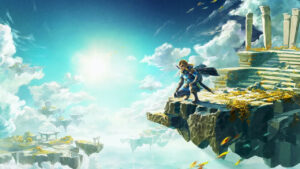Zelda’s legend proves great IP is timeless

IT TOOK just three days for Tears of the Kingdom, the latest installment in the Legend of Zelda franchise, to sell over 10 million copies worldwide. Four million of those sales were in the Americas, where it became Nintendo Co.’s fastest-selling game ever. It’s likely to be the biggest-selling game of the year on any platform.
Meanwhile, the Super Mario Bros. movie smashed past $1 billion at the global box office in less than two months. As of May 21, it was the third-most popular animated film ever. Even Nintendo’s rivals can’t resist its charms, with Sony Group Corp.’s chief executive officer, Kenichiro Yoshida, telling investors last week: “I watched Super Mario. Beautiful IP, wonderful IP. I played Super Mario games 30 years ago, and I was so intense playing it. A lovable IP can survive 30, 50, or 100 years.”
What can we take from this? Nintendo has proven yet again the timeless appeal of its enduring characters, kept fresh by the boundless creativity of its designers. No matter that the Nintendo Switch is a six-year-old console that began its life technically inferior to rival machines from Sony and Microsoft Corp., and is even further behind now. Nintendo has always managed to counteract hardware deficits with a surplus in genius.
Thanks largely to Zelda, which will likely be the last major game on the Switch, Nintendo is projecting that it can sell another 15 million consoles globally by the end of its current fiscal year. That would bring the total sales of the console since its release to around 140 million units, behind only two other devices on the all-time best-sellers list — its own handheld DS and Sony’s PlayStation 2.
If Nintendo’s forecasts are accurate, it would be the second year of declining Switch sales. That had investors worried, but they were missing the point. While Nintendo is said to have another console in the works for 2024, we are in the swansong era of home games consoles. In the not-too-distant future, the computation that today mostly takes place in a box underneath your TV will instead happen primarily in cloud servers, streamed back to you over fast internet connections that will make the hardware you own almost arbitrary.
Like Netflix or Amazon Prime viewers today, gamers in the future will switch from one gaming subscription to another on a whim — rather than locking themselves into one particular platform for several years, as has been the case since the early 1990s. The winners will, of course, be those offering the biggest number of top games, exclusive to their subscription platform. What has traditionally been referred to as the “console wars” will eventually be more accurately described as just the gaming wars.
Microsoft had this streaming future in mind when it agreed to its $69-billion purchase of Activision Blizzard, Inc., maker of the wildly successful Call of Duty franchise, knowing that it was a must-have for millions of gamers who today play across a number of platforms. In an effort to fend off competition regulators, Microsoft said it would commit to make Call of Duty available to rivals’ systems for at least the next 10 years.
Ten years? That’ll fly by — explaining why regulators in the UK were unconvinced by Microsoft’s promise. With Zelda’s appeal now spanning nearly four decades, you can certainly see their point.
Call of Duty, already 20 years old, is just getting started. The latest installment, released last year, surpassed $1 billion in sales in just two weeks. Sharing it a little for a decade is a small concession given the long-term potential. UK regulators concluded that Microsoft would be heavily incentivized to make Call of Duty exclusive, the core selling point of a future subscription gaming plan. Microsoft would be foolish not to. (Europe waved the deal through. US regulators are challenging the takeover in court. Microsoft is appealing the UK ruling.)
We don’t yet know what plans Nintendo has for it subscription platform as the market matures. But its strongest asset will always be its homegrown IP. In its last fiscal year, which ended in March, 39 games on the Switch each sold more than one million copies — 26 of them developed in-house. Some of those games are more than five years old, but have immense replayability. They are the Seinfelds and The Office-es of gaming; comfort titles that will give Nintendo’s subscription offerings immense “stickiness” — a reason to keep it from month-to-month outside of the major releases.
For these reasons, Nintendo will continue to punch above its weight. Among the top 50 all-time top selling games, Nintendo is responsible for more than half. It’s a stunning record. And wonderful IP, as Mr. Yoshida says, lasts generations. — Bloomberg Opinion




